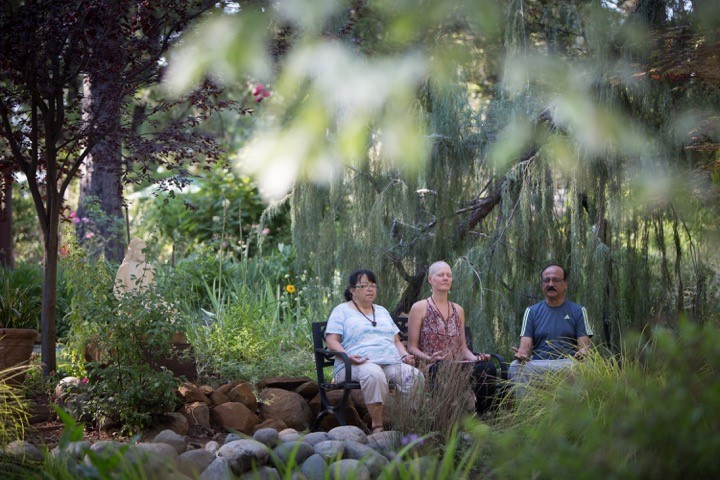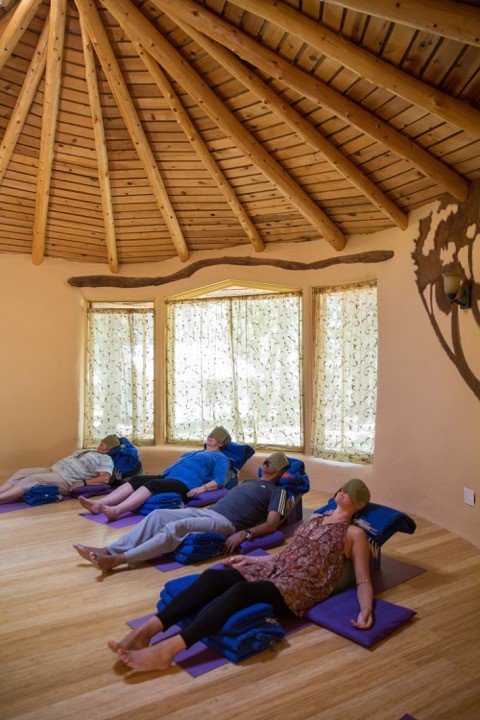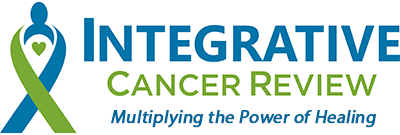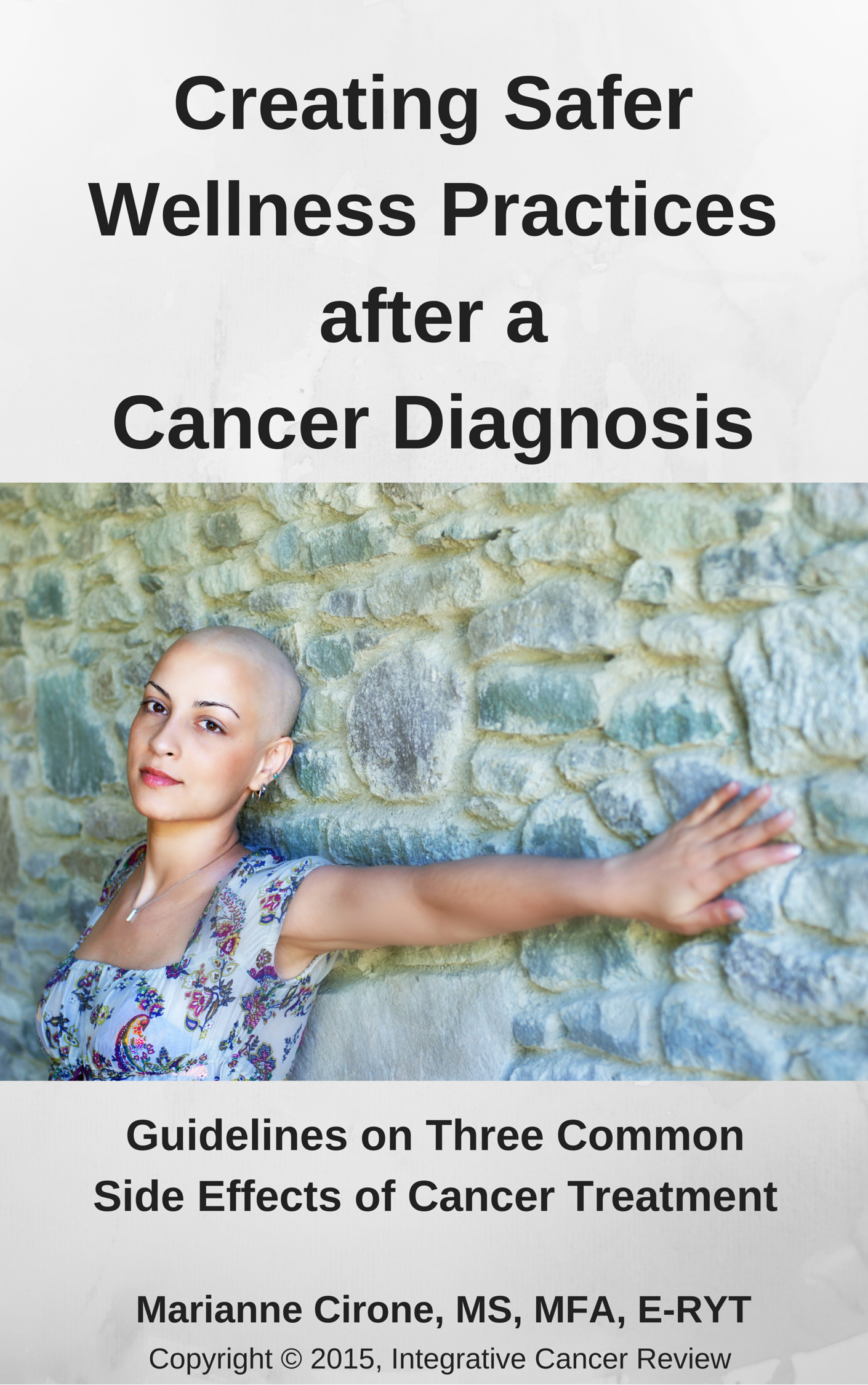
Lee Majewski is an IAYT-certified yoga therapist and cancer survivor who has created intensive three-week retreats to support healing after conventional treatment ends.
What is the best advice that you would give to someone with a new cancer diagnosis?
My advice is – start doing yoga immediately as soon as you hear the diagnosis, or even before. The practice needs to be done DAILY – not just once or twice a week! Choose the time of the day, and maintain consistent practice at least one hour per day, or ½ hour, twice a day – morning and evening. Choose the modality that meets your limitations at hand and just DO IT!
When we first hear the diagnosis of cancer, our anxiety level automatically skyrockets. Asanas and pranayama bring relief from tension in the body and mind. Meditation helps in maintaining a clear mind amongst the chaos of all the new information one has to digest. All three modalities may help develop awareness of what is happening inside mentally, emotionally and physically and how to handle it. Yoga, as a science, presents the tools for dealing with emotional and mental challenges we have coming at us from all sides. It will help to prevent us from sinking into victimhood.
What type of timeframe for yoga/activity do you recommend that cancer patients follow after surgery?
When surgery is involved, we have to wait for healing to happen before we come back to gentle asanas. But we still can do pranayama and meditation. We can do mantra japa (repeating a phrase or word), or chanting and mudras (gestures). It all helps to bring the benefits mentioned above. Remember – yoga is not only asanas. It is a vast science offering many tools and techniques, which regulate the functioning of our body, mind and emotions. We can do yoga in any state we are in, and it is always helpful. We can do (and we should do) yoga when we are in our last breath!
What is the main thing that you see that people don’t know about when starting yoga during or after cancer treatment?
 There is this wide spread misconception that yoga equals doing strange poses called asanas, and that you have to be physically fit and slim in order to do it. Unfortunately, this is created by the yoga magazines depicting beautiful young and slim ladies in more challenging asanas. The concept of yoga techniques as a vast variety of therapeutic tools is still unknown and very much unappreciated as yet.
There is this wide spread misconception that yoga equals doing strange poses called asanas, and that you have to be physically fit and slim in order to do it. Unfortunately, this is created by the yoga magazines depicting beautiful young and slim ladies in more challenging asanas. The concept of yoga techniques as a vast variety of therapeutic tools is still unknown and very much unappreciated as yet.
The misunderstanding that yoga is physical exercise is wide spread. Yet, the term “yoga” encompasses an immense science of yogic practices from postures (asanas), breath management techniques (pranayama), meditation, chanting, mudras and bandhas (yogic locks), to a deep relaxation called Yoga Nidra. They all present a vast variety of therapeutic effects. Yoga has proven to be very effective in dealing with various psychosomatic, stress-related and lifestyle disorders, as well as the side effects of cancer treatments. It works on our body, energy, emotions and state of our mind, bringing all the systems back to balance. There is no doubt that yoga provides a highly effective solution and relief during the time of high stress and life-changing trauma of a cancer diagnosis. And, unlike many treatments, it does not create negative side effects!
The challenge for cancer patients and survivors is to find a knowledgeable yoga therapist who has practiced all of these techniques, knows their effects and at the same time, understands the nature of the given disease and treatment. Yoga therapy is a rising field and only two years ago the standards for training yoga therapists have been laid out by International Association of Yoga Therapist (IAYT).
Last year, the first schools were accredited. This year, IAYT started the process of yoga therapist certification. Such certification requires 1000 hours of training, which includes also practical internships. To find a certified yoga therapist go to the International Association of Yoga Therapists www.iayt.org and look for one in your area. When you find someone, my first question would be if they have their own daily yoga practice, which they do for themselves – we call it sadhana. If the answer to this question is no – keep on looking, until you will find a practitioner, who is doing himself not only asanas, but also pranayama and meditation.
What kind of feedback have you gotten from your clients or medical professionals in terms of the benefits of your programs?
We conduct standard psychological tests on the first day, last day and as a three-month follow up during every program. Over the last four years, almost every patient showed dramatically reduced levels of depression, confusion, tension and anger. At the same time, levels of well-being, hope self-empowerment and energy were greatly increased. Their whole demeanor changes and they regain the spring in the step and spark in the eye. This stays with them past the three month follow up because they do their practices at home.
Here is what one cancer survivor said about our program:
“I attended a three-week Rejuvenation retreat for cancer patients conducted by Lee in October 2016. This program has been designed by her using the knowledge of practices and philosophy of Yoga. It is a very intense program and has a very positive impact on the participants. Apart from feeling physically recharged, I was able to get over a lot of emotional stresses and came back with a lot of positive energy. Being healthy requires not only physical fitness, but also a healthy mind and emotional well-being. Lee has a very good knowledge of Yoga practices and uses techniques like meditation and Yoga Nidra to delve deeper into the psyche of the participants. Using specific interventions, she is able to bring up a lot of pent up and suppressed negative emotions, which get accumulated during treatment and in our past life. She then helps the participants to unburden these negative feelings and get over them effectively. Her capability of understanding human mind and handling emotions is excellent. She is a truly committed professional who understands the needs and emotions of people who have been through the trauma of cancer. ”
Kanwar Seth, Delhi, India
There are also several very moving stories shown in videos posted on our website.
What is your advice for yoga teachers who want to work with cancer patients and survivors?
My first advice is the one I give to all teachers who I train. “You cannot teach what you do not experience! You must not teach if you do not have your own sadhana practice.”
If people want to work with any specific population, therapeutically, then my suggestions would be take yoga therapy course from a school accredited by IAYT. You will then have the proper knowledge of the tools and approaches to the disease you are dealing with. That requires a serious commitment – both financially and time-wise.
If you cannot afford that, then my second recommendation is to understand the nature of the disease and side effects of treatment. Understand the stages of treatment and the state of the patients. Learn contraindications, to be able to match the yoga tool to a particular state of the patients. Knowing and understanding what people are going through will help to make your treatments effective. I also would advise to take special care and time in assessing peoples’ physical, mental and emotional conditions, which are changing from day to day – so I suggest the classes should be individual, one-on-one.
Finally, remember that asana is only one tool out of the whole of variety in yoga. Therefore, take the time to find out what particular patient responds best to. It may be meditation, it may be chanting, it may be asana, it may be pranayama or a combination of any of those.
How can people find out more about your business?
So far, the only marketing tools we use are the website (www.kdham.com/cancer) and Facebook (www.facebook.com/cancerdetox). As a result, we get cancer patients and survivors from all over the world – both Americas, Europe, the Middle East, and, of course, India. However, after four years of running Rejuvenation Retreat, word of mouth is beginning to work and we find ourselves booked well in advance, with a waiting list. I just hope to have more therapists train, so that we can start offering our programs to all those who can benefit.
My direct e-mail is litka24@gmail.com.

















